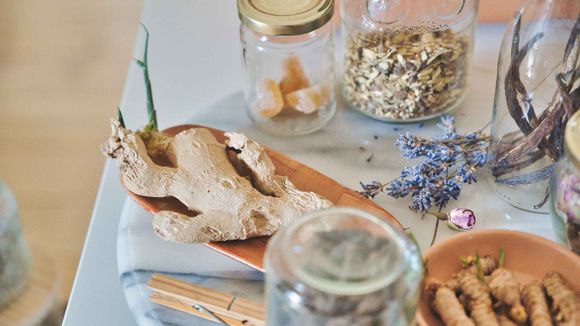Essence of Campo
Campo (pictured) is the common concept of over-the-counter medicines available in both drugstores and prescription drugs in Japan. They can be used together with some conventional drugs or sometimes as an independent alternative treatment. Campo drugs are traditional Japanese drugs produced from medicinal plants and herbs.
Campo medicine is a medical system that is systematically organized based on the reactions of the human body to therapeutic interventions. With its roots in ancient Chinese medicine, this previous form of empirical medicine was introduced in Japan approximately in the 5th to 6th centuries. [Ref. 1]
It subsequently developed into a unique form of medicine by adapting to japan's climate and culture and was further refined to meet the constitution of the Japanese people before developing into a separate form of traditional medicine.
In the 17th century, Campo medicine underwent a period of great development, which also cared about the style that is practiced today. The word 'kampo' was originally coined to distinguish itself from 'rampo' - a term used to describe Western medicine introduced in Japan by the Dutch.
Campo also differs from traditional Chinese medicine and traditional Korean medicine. In fact, Campo medicine is a unique Japanese form of medicine.
The most widely prescribed drug Campo was caconto (70.2%), followed by dykenchuto (50.2%) and shakuyakukanzo (49.2%). In particular, the use of all three has increased dramatically with the accumulation of supporting scientific evidence. [ [ref. 2] Several campo medicines commonly used for stomach problems are:
- Anchusan
- Hangeikobokoutou
- Rikunshitow
Today campo is strictly regulated by the national Japanese government - it is not just a selection of random herbs that are used. The type and ratio of ingredients in each formulation are determined, the number of formulations is limited and the final products are tested and approved for use. Studies on the use of campo in the treatment of various health conditions are carried out and you can often find published studies in English simply by searching the web.
What's campo made of?
Japanese campo is made from natural ingredients - mainly plants, sometimes with minerals and animal products included. Some of the main herbal ingredients are:
- Ginger (Zingiber officinale ) [ref. 3]
- Cinnamon (Cinnamomum Verum) [ref. 4]
- Licorice
- Medicinal mushrooms
- Ginseng (Panax) [Ref. 5]
- Handrails (Perilla frutescens) [ref. 6]
- Magnolia Bark [ Ref. 7]

What is Campo used for?
Japanese campo remedies are used to treat a wide range of health conditions - from the common cold to anxiety, premenstrual syndrome (PMS), stomach problems, headaches, muscle aches, acne and even as additional therapy as part of cancer treatment protocols. [Ref. 8]
Like traditional Chinese medicine, the Japanese campo is designed to treat the whole body, not just the symptoms of disease. The recommended formulations will depend on the unique constitution of each person, as well as their dosage. There are more than 210 different Campo formulas used in Japan and most uses of Campo are for modulating the immune response, i.e. to improve immunity. [ref. 9]
Other main areas in which campo is actively used are odonopathy (dental diseases) [ [ref. 10] ]; as supportive care for heart failure/function [ [ref. 11] ]; inflammatory bowel disease [ [ ref. 12] ]; various symptoms associated with aging (anti-ageing effect). [ [ref. 13] ]

